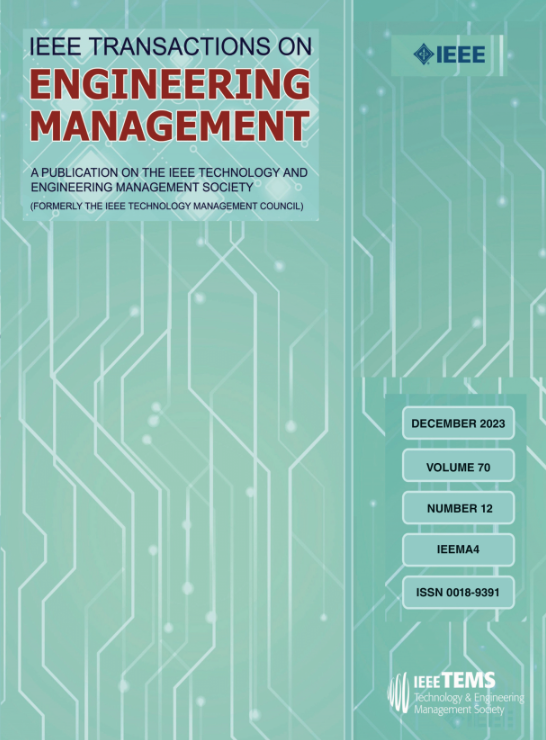Dynamic Centralized Public R&D Project Portfolio Selection
IF 5.2
3区 管理学
Q1 BUSINESS
引用次数: 0
Abstract
Many public funding agencies adopt the one-stage call-based mode to select R&D projects. The funding decision-making in this mode is characterized by two primary features: 1) it is static, meaning that decision-makers solely concentrate on projects submitted within the current call, and 2) it is decentralized, indicating that funding decisions are made independently across diverse sectors/disciplines. As a result, the administrative burden on funding agencies is reduced. However, due to the budget constraint, the funding agencies may fail to fund better projects that emerge in future calls or appear in other sectors/disciplines. Therefore, we investigate whether a better project portfolio can be achieved by selecting public R&D projects in a dynamic and centralized manner. We formulate a Markov decision process (MDP) model for the dynamic centralized public R&D project portfolio selection problem. We develop an approximate dynamic programming (ADP) approach that combines learning-based Monte Carlo simulation and a two-stage rollout algorithm to efficiently solve the MDP model. Based on extensive computational experiments, we compare our ADP approach with a threshold heuristic that is representative of the static and decentralized funding mode, as well as two baseline algorithms. The results indicate that our ADP approach is effective, and it is beneficial to adopt the dynamic centralized decision-making mode in public R&D project portfolio selection. We also investigate our ADP approach utilizing a case study based on real-world data from the National Natural Science Foundation of China. Our ADP approach can be integrated into the decision support systems of funding agencies, enabling automated, dynamic, and centralized selection of public R&D projects.动态集中公共研发项目组合选择
许多公共资助机构采用一阶段征集的方式来选择研发项目。该模式的资助决策具有两个主要特征:1)静态的,即决策者只关注当前征集内提交的项目;2)分散化的,即不同部门/学科独立做出资助决策。因此,筹资机构的行政负担减轻了。然而,由于预算限制,资助机构可能无法资助未来出现的更好的项目或出现在其他部门/学科。因此,我们研究了以动态和集中的方式选择公共研发项目是否可以获得更好的项目组合。针对动态集中式公共研发项目组合选择问题,建立了马尔可夫决策过程模型。我们开发了一种近似动态规划(ADP)方法,该方法结合了基于学习的蒙特卡罗模拟和两阶段推出算法来有效地求解MDP模型。基于广泛的计算实验,我们将我们的ADP方法与代表静态和分散资助模式的阈值启发式方法以及两种基线算法进行了比较。结果表明,ADP方法是有效的,有利于在公共研发项目组合选择中采用动态集中决策模式。我们还利用基于中国国家自然科学基金的真实数据的案例研究来研究我们的ADP方法。我们的ADP方法可以集成到资助机构的决策支持系统中,实现公共研发项目的自动化、动态和集中选择。
本文章由计算机程序翻译,如有差异,请以英文原文为准。
求助全文
约1分钟内获得全文
求助全文
来源期刊

IEEE Transactions on Engineering Management
管理科学-工程:工业
CiteScore
10.30
自引率
19.00%
发文量
604
审稿时长
5.3 months
期刊介绍:
Management of technical functions such as research, development, and engineering in industry, government, university, and other settings. Emphasis is on studies carried on within an organization to help in decision making or policy formation for RD&E.
 求助内容:
求助内容: 应助结果提醒方式:
应助结果提醒方式:


